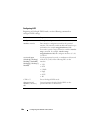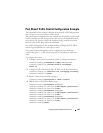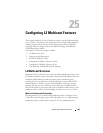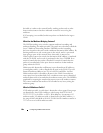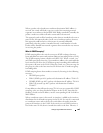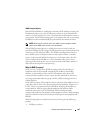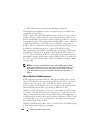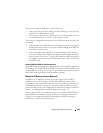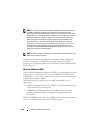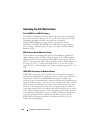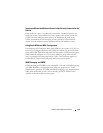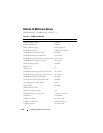
808 Configuring L2 Multicast Features
• PIMv2 hello packets with destination IP address as FF02::D
Dynamically learned multicast routers are timed out after an adminstrator-
configurable period of time.
MLD is a protocol used by IPv6 multicast routers to discover the presence of
multicast listeners (nodes wishing to receive IPv6 multicast packets) on its
directly-attached links and to discover which multicast packets are of interest
to neighboring nodes. MLD is derived from IGMP; MLD version 1 (MLDv1)
is equivalent to IGMPv2, and MLD version 2 (MLDv2) is equivalent to
IGMPv3. MLD is a subprotocol of Internet Control Message Protocol version
6 (ICMPv6), and MLD messages are a subset of ICMPv6 messages.
The switch snoops both MLDv1 and MLDv2 protocol packets and forwards
IPv6 multicast data based on destination IPv6 multicast MAC addresses
(33:33::). The switch floods multicast control plane traffic addressed to the
permanently assigned (well-known) multicast address FF0x::/8 to all ports in
the VLAN, except for MLD packets, which are handled according the MLD
snooping rules.
What Is Multicast VLAN Registration?
IGMP snooping helps limit multicast traffic when member ports are in the
same VLAN; however, when ports belong to different VLANs, a copy of the
multicast stream is sent to each VLAN that has member ports in the
multicast group. MVR eliminates the need to duplicate the multicast traffic
when multicast group member ports belong to different VLANs.
MVR uses a dedicated multicast VLAN to forward multicast traffic over the
L2 network. Only one MVLAN can be configured per switch, and it is used
only for certain multicast traffic, such as traffic from an IPTV application, to
avoid duplication of multicast streams for clients in different VLANs. Clients
can dynamically join or leave the mutlicast VLAN without interfering with
their membership in other VLANs.
MVR, like IGMP snooping, allows a layer 2 switch to listen to IGMP messages
to learn about multicast group membership.
NOTE: It is strongly recommended that users enable IGMP snooping if MLD
snooping is enabled and vice-versa. This is because both IGMP snooping and
MLD snooping utilize the same forwarding table, and not enabling both may
cause unwanted pruning of protocol packets utilized by other protocols, e.g.
OSPFv2.



